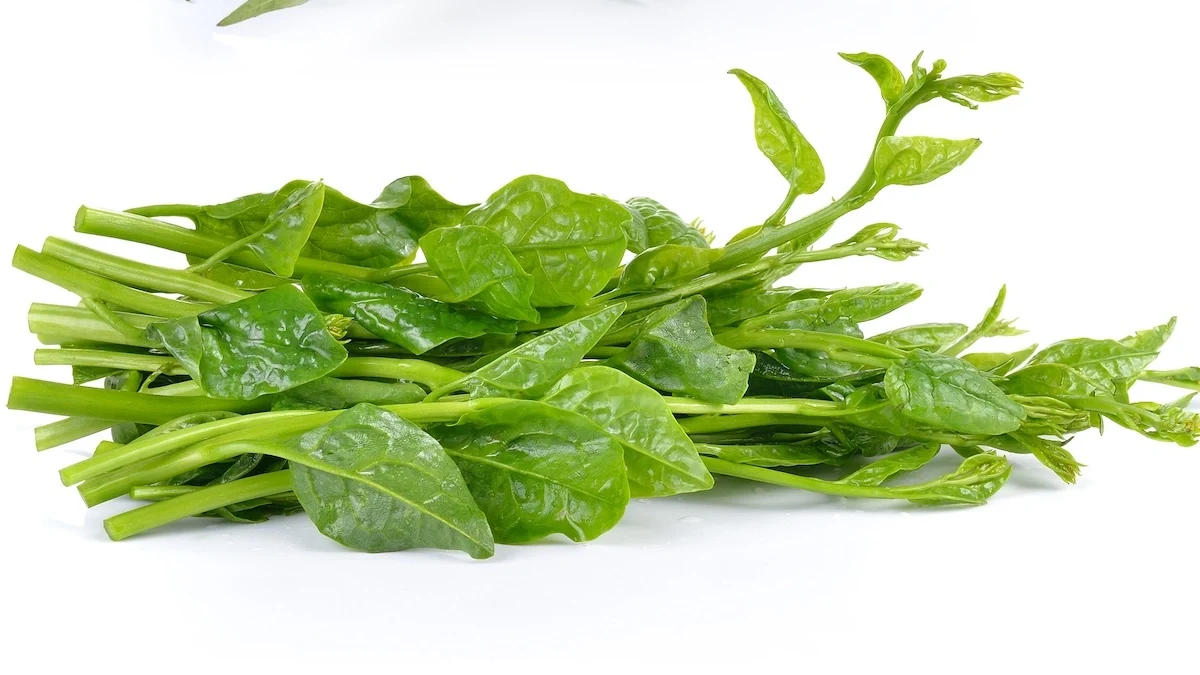Table of contents
Growing Malabar Spinach in Australia
Malabar spinach is an exotic, heat-loving tropical climber that’s easy to grow and adds some colour and flavour to salads or stir fries. So get all the tips you need for planting, growing, and harvesting this edible fast-growing vine!
Malabar spinach (basella alba) is a nutritious vegetable that has gained popularity due to its fast-growing nature and ability to be grown even in limited spaces. Learn more about the best soil, planting, and growing conditions for this unique plant, as well as how to care for your malabar spinach crop.
Commonly used as a leafy green, it is native to the Indian subcontinent, Southeast Asia and New Guinea. This is an edible perennial vine from the tropics, so it grows easily in Northern Australia.
Other names for malabar spinach (basella alba) include vine spinach, Ceylon spinach and Indian spinach.
Growing Malabar Spinach from Seed
We have grown this plant both in pots and containers and sown directly into the garden.
Time needed: 5 minutes
How to grow malabar spinach.
- Sow Seeds
Sow seeds directly in the garden 10mm (.04In) deep and 20cm (8in) apart.
- Water
Keep soil moist but never wet or dry.
- Temperature
Seeds should germinate in around 10-21 days at a soil temperature of 24-30°C (75-86F).
- Care
Young seedlings will need protection from pests, pets and weather until they are established.
- Trellis
Where to locate your malabar spinach is an important decision. You need to have a trellis or some structure for your spinach to climb up.
How to grow Malabar Spinach from Cuttings
- Select Healthy Cuttings: Choose a healthy Malabar spinach plant from which to take cuttings. Look for stems that are about 4-6 inches long and have several sets of leaves.
- Prepare the Cuttings: Use clean, sharp scissors or pruning shears to cut the stems just below a leaf node (where a leaf attaches to the stem). Each cutting should ideally have at least 2-3 leaf nodes.
- Remove Lower Leaves: If the lower leaves on the cutting are close to the stem, you can remove them to expose a bit of the stem. This can help in planting and encourage root growth.
- Planting the Cuttings: Fill small pots or containers with well-draining potting mix. Make a hole in the soil with your finger or a pencil that is deep enough to accommodate the cutting.
- Insert the Cuttings: Gently insert each cutting into the hole you made in the soil. Press the soil around the cutting to hold it upright.
- Watering: Water the cuttings thoroughly after planting to settle the soil and ensure good contact between the cutting and the soil. Keep the soil consistently moist but not waterlogged. Malabar spinach prefers evenly moist soil for optimal rooting.
- Light and Temperature: Place the pots or containers in a warm, bright location with indirect sunlight. Avoid direct sun exposure, especially during the hottest part of the day, as it can stress the cuttings.
Malabar Spinach Growing Conditions
Malabar spinach grows best in sunny locations, with temperatures between 18–30 degC (64-86 degF). If possible, incorporate a layer of compost into the soil before planting for optimal growth.
Malabar spinach prefers well-draining soils with a pH level of 6 to 7.5. When planting Malabar Spinach, make sure your soil is light, well-drained and that it retains moisture without becoming soggy.
Growing Malabar Spinach in Pots
For a healthy and happy spinach crop, pick the right soil for your containers. Mix compost into your soil for added fertility, and opt for containers that are at least 20cm (8in) deep to give them plenty of room.
Furthermore, make sure to use pots with good drainage holes and place them in an area of the garden that gets full sun or part shade!
Most importantly, have something for the vine to grow up. So either place your pot next to a trellis, tree, or whatever you would like the vine to grow over. Remember this plant grows vigorously in the tropics.
Watering Malabar Spinach
Malabar Spinach loves to be watered and requires regular watering, especially when the temperatures climb. When the weather is dry, water it deeply 2–3 times a week and make sure it never wilts.
Mulch around the spinach to help retain moisture and reduce weeds. The occasional misting won’t hurt, but avoid spraying water directly on the vines since this can cause disease. It is better to water at the base of your plants!
Malabar Spinach Benefits
Malabar spinach growing allows you to consume the leaves of this plant, which are packed with nutrition. Indeed it really is a superfood! The leaves of this plant are 93% water, 3% carbohydrates, 2% protein and contain very little fat.
Vitamins
A 100 gram amount contains 19 calories of food energy, providing 20% or your daily requirements of vitamin A and C, folate and magnesium. Indeed this plant has 3 times more vitamin C than most other spinach varieties and over 1.5 times more vitamin A than kale.
Fibre
This plant is a great source of dietary fibre. Consequently, regular consumption can facilitate smooth movement in your intestines and help to prevent bowel problems.
Malabar Spinach toxicity
Malabar spinach is a nutritious and versatile leafy vegetable enjoyed in many cuisines. While it contains oxalates and possibly saponins, which could pose mild risks in large quantities or to sensitive individuals, these concerns are generally minimal for most people when consumed in typical culinary amounts. As with any food, moderation and awareness of personal sensitivities are key to enjoying Malabar spinach safely.
Other Tropical Vegetables
- Capsicum
- Cucumber
- Eggplant
- Jicama
- Kangkong
- Malabar Spinach Growing
- Pak Choi
- Perpetual Spinach
- Pumpkin Growing
- Snake Beans Growing
- Sweet Potato
- Tatsoi


